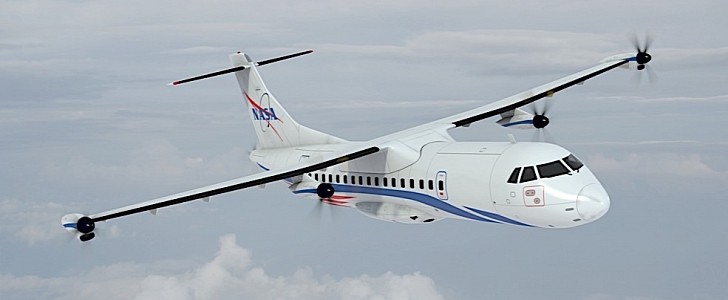The new technology is called EAP – that’s short for Electrified Aircraft Propulsion, and it calls for an airplane’s propellers or fans to be driven by electric motors. It is one of NASA’s many aviation research projects currently underway, and it just entered a new stage.
Ever since electricity has become an important part of how cars operate on the road, companies and institutions have begun looking into how one could integrate such systems in airplanes. After all, according to World Wild Life, if the aviation industry was its own nation, it would be in the top ten carbon-polluting nations on the planet.
The use of electricity for propulsion in airplanes would have a great impact on the emissions levels of this industry, and NASA is one of the organizations that have committed to aiding the transition to such a technology. We’re still a long way from seeing that happening, but the space agency is wasting no time in advancing its goals.
Last week, NASA announced it is seeking proposals from the industry for ground and flight demonstrations for EAP. It needs megawatt-class powertrain systems for subsonic aircraft to be put on the table for analysis, in the hope a breakthrough can take place, fast.
Why fast? Because there’s a deadline NASA wants to meet, and that would be 2035. That’s when it hopes such systems could go into production.
“The release of this request for proposals represents an important next step as NASA partners with industry to further mature critical EAP technologies through demonstrating integrated megawatt-class powertrain systems in flight,” said in a statement Lee Noble, NASA’s Integrated Aviation System Program director.
“These flight demonstrations have strong applicability to sustainable and highly-efficient aircraft powertrain systems that will facilitate continued U.S. competitiveness for the next generation of commercial transport aircraft.”
As for how this is supposed to work, we’re probably going to get something not unlike the electric or hybrid systems currently being used in the auto industry, with them either completely powering the planes, or aiding the existing engines that run of fuel.
NASA’s deadline for proposals is April 20. More details about what is required can be found at this link.
The use of electricity for propulsion in airplanes would have a great impact on the emissions levels of this industry, and NASA is one of the organizations that have committed to aiding the transition to such a technology. We’re still a long way from seeing that happening, but the space agency is wasting no time in advancing its goals.
Last week, NASA announced it is seeking proposals from the industry for ground and flight demonstrations for EAP. It needs megawatt-class powertrain systems for subsonic aircraft to be put on the table for analysis, in the hope a breakthrough can take place, fast.
Why fast? Because there’s a deadline NASA wants to meet, and that would be 2035. That’s when it hopes such systems could go into production.
“The release of this request for proposals represents an important next step as NASA partners with industry to further mature critical EAP technologies through demonstrating integrated megawatt-class powertrain systems in flight,” said in a statement Lee Noble, NASA’s Integrated Aviation System Program director.
“These flight demonstrations have strong applicability to sustainable and highly-efficient aircraft powertrain systems that will facilitate continued U.S. competitiveness for the next generation of commercial transport aircraft.”
As for how this is supposed to work, we’re probably going to get something not unlike the electric or hybrid systems currently being used in the auto industry, with them either completely powering the planes, or aiding the existing engines that run of fuel.
NASA’s deadline for proposals is April 20. More details about what is required can be found at this link.

